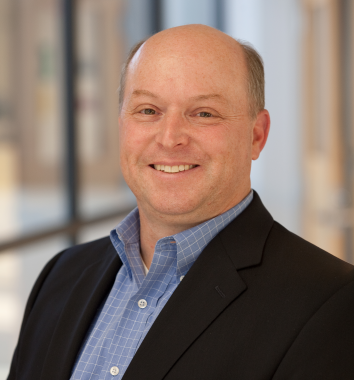First seven stem cell lines ready for action
UMMS Human Stem Cell Bank distributes home-grown disease fighters worldwide

The first seven stem cell lines grown and banked at UMass Medical School’s Human Stem Cell Bank are ready for worldwide distribution to researchers working on discovering new therapeutic treatments for diseases such as cancer, juvenile diabetes, Alzheimer’s and Parkinson’s.
Stem cells are different from other cells because they not only renew themselves for long periods, but with the right signals, they can become many different types of cells. Because of these unique properties, scientists are able to use stem cells to learn what makes individual cell types unique, how an organism develops from a single cell to an adult and how healthy cells replace damaged cells in adult organisms.
Developed in partnership with, and supported by, the Massachusetts Life Sciences Center, the Human Stem Cell Bank provides the biomedical research community with expertly derived and maintained human embryonic stem cell lines for fundamental biological investigation and therapeutic applications. The bank works with other institutions and researchers to bank and characterize stem cell lines, detailing each cell line and its properties. After the lines are put through rigorous quality control testing by the bank’s experts, they are made available to researchers worldwide.
“This is an important milestone for the Human Stem Cell Bank,” said Joseph C. Laning, PhD, senior director of the Human Stem Cell Bank and Registry. “Our goal has always been to provide researchers with the highest quality stem cell lines so they know what they are getting and that the cells they get will perform as described. Having these stem cell lines tested, verified and available frees researchers from the expense and burden of manufacturing cell lines themselves, allowing them instead to focus on their research.
“These are the first stem cell lines in what will be a broad catalog of cell materials we intend to make available to researchers,” Laning added.
The seven lines now available at UMass Medical School’s Human Stem Cell Bank were developed in the lab of George Daley, MD, PhD, director of the Stem Cell Transplantation Program at Children’s Hospital in Boston, and provided to the bank last year. Among the cell lines now available for distribution are five human embryonic stem cell lines (hESC) and two induced pluripotent lines. Induced pluripotent stem cells (iPS) are a type of stem cell derived from other adult cell types, such as skin cells. Six additional lines from Dr. Daley’s lab have been banked and are scheduled to be made available for distribution later this year.
“We are pleased and excited that access to these seven stem cell lines will be provided to scientists from around the world by Massachusetts, through the UMMS Human Stem Cell Bank,” said Susan Windham-Bannister, president and CEO of the Massachusetts Life Sciences Center. “Stem cell research and regenerative medicine are evolving at a rapid pace and represent key areas of innovation in life sciences. The availability of these stem cell lines to the international research community reinforces Massachusetts’ role as a global focal point for life sciences research, will advance the current understanding of a host of debilitating diseases and move us one step closer to discovering new treatments.”
In addition to making these seven lines available, the UMMS Human Stem Cell Bank has entered an agreement to bank a catalog of as many as 80 stem cell lines with limited availability (17 other lines have been, and still are, available to the research community) from the Harvard Stem Cell Institute, a scientific collaborative of stem cell scientists at Harvard University and other institutions. “This agreement allows us access to the stem cell lines developed by members of Harvard’s Stem Cell Institute for the purposes of banking and distribution,” said Laning. “We believe that over time, a majority of these lines will be made available to the research community through the UMMS Human Stem Cell Bank.”
Working in conjunction with the bank, the UMMS International Stem Cell Registry offers a searchable, comprehensive online database that includes published and validated unpublished information on human embryonic stem cell lines derived worldwide. Since its inception less than three years ago, the registry has rapidly expanded and evolved to become a premier source among scientists for stem cell information. To date, more than 10,000 online visitors worldwide have accessed the database.
The registry includes information on the derivation, availability and characteristics for more than 1,200 hESC and iPS cell lines developed in more than 22 different countries, including more than 200 cell lines with genetic disorders. In addition, the curators of the registry have developed a unique, searchable database of more than 1,600 citations that are indexed by cell line name.
An early component of Governor Deval Patrick’s 10-year, $1 billion Life Sciences Initiative, the UMMS Human Stem Cell Bank and Registry were established in 2008 in partnership with the Massachusetts Life Sciences Center. Since then, the center has committed nearly $9.4 million to the bank and registry, helping to position Massachusetts at the forefront of stem cell research. Housed at the Medical School’s Shrewsbury campus, the UMMS Human Stem Cell Bank and Registry occupies a 15,000-square-foot facility with research and training space.
